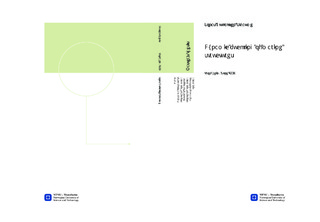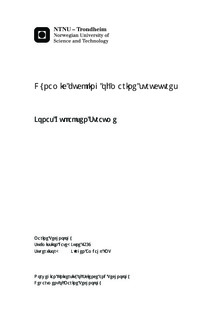| dc.contributor.advisor | Amdahl, Jørgen | nb_NO |
| dc.contributor.author | Straume, Jonas Gullaksen | nb_NO |
| dc.date.accessioned | 2014-12-19T12:12:54Z | |
| dc.date.available | 2014-12-19T12:12:54Z | |
| dc.date.created | 2014-09-13 | nb_NO |
| dc.date.issued | 2014 | nb_NO |
| dc.identifier | 746615 | nb_NO |
| dc.identifier | ntnudaim:10770 | nb_NO |
| dc.identifier.uri | http://hdl.handle.net/11250/239146 | |
| dc.description.abstract | In this report the buckling resistance of marine structures when dynamic effects is important is investigated. A review of the governing theory is presented for both beam and plates. A sample of the different ways of solving the bucking problem is presented, and what kind of assumptions that are made. The overall conclusion from this study is that a structure may have a significant reserve capacity with respect to buckling when dynamic effects are important.A selected solution to the dynamic buckling problem for unstiffened plates is chosen. A MATLAB program is written using this basis with numerical time integration. This program is compared with the finite element analysis programs USFOS and Abaqus FEA. The results were very similar to the finite element programs, and could predict for example the axial load with high accuracy.An unstiffened plate was investigated with respect to dynamic buckling. Both displacement and load control was used. From this it was found that the dynamic buckling in an elastic analysis was not critical for the capacity of the plate. Buckling of the plate combined with a yield stress found that the capacity increased with dynamic effects.An analysis of a tension leg in an offshore wind turbine was conducted. The top of the tension leg was displaced to simulate vertical motions of the wind turbine. The motions made the tension leg take compression forces. The result from this analysis was that the capacity of the tension leg increased substantially with fast-applied loads. The buckling motion of the leg could give large tension forces during the straightening of the leg. These forces could be critical for the leg, and larger than the corresponding compressive load.The last type of marine structure investigated was a steel riser. The scenario examined was a production riser that was dropped from the platform, and the following impact with a subsea structure at the bottom. It was concluded that the energy of the impact was dependent on the curvedness of the riser. For a curved riser, a smaller amount of energy was dissipated to the deformation of the ground. The energy dissipation was also dependent on the deformation strength of the ground. If the riser yielded, the energy dissipated was much smaller. Risers with a lot of kinetic energy had high buckling modes as response near the impact. These modes were very similar to the eigenmode corresponding to the impact durations. From this it could be said that the eigenmodes may have influence on the buckling mode, and strength.For further work it is recommended that a design strength formulation is found for dynamic buckling, for both columns and plates. It is also recommended that the analyses of the marine structures gets expanded. Doing analyses on more complex structures with other actions included could give more insight on the effect of dynamic buckling. | nb_NO |
| dc.language | eng | nb_NO |
| dc.publisher | Institutt for marin teknikk | nb_NO |
| dc.title | Dynamic buckling of marine structures | nb_NO |
| dc.type | Master thesis | nb_NO |
| dc.source.pagenumber | 146 | nb_NO |
| dc.contributor.department | Norges teknisk-naturvitenskapelige universitet, Fakultet for ingeniørvitenskap og teknologi, Institutt for marin teknikk | nb_NO |

